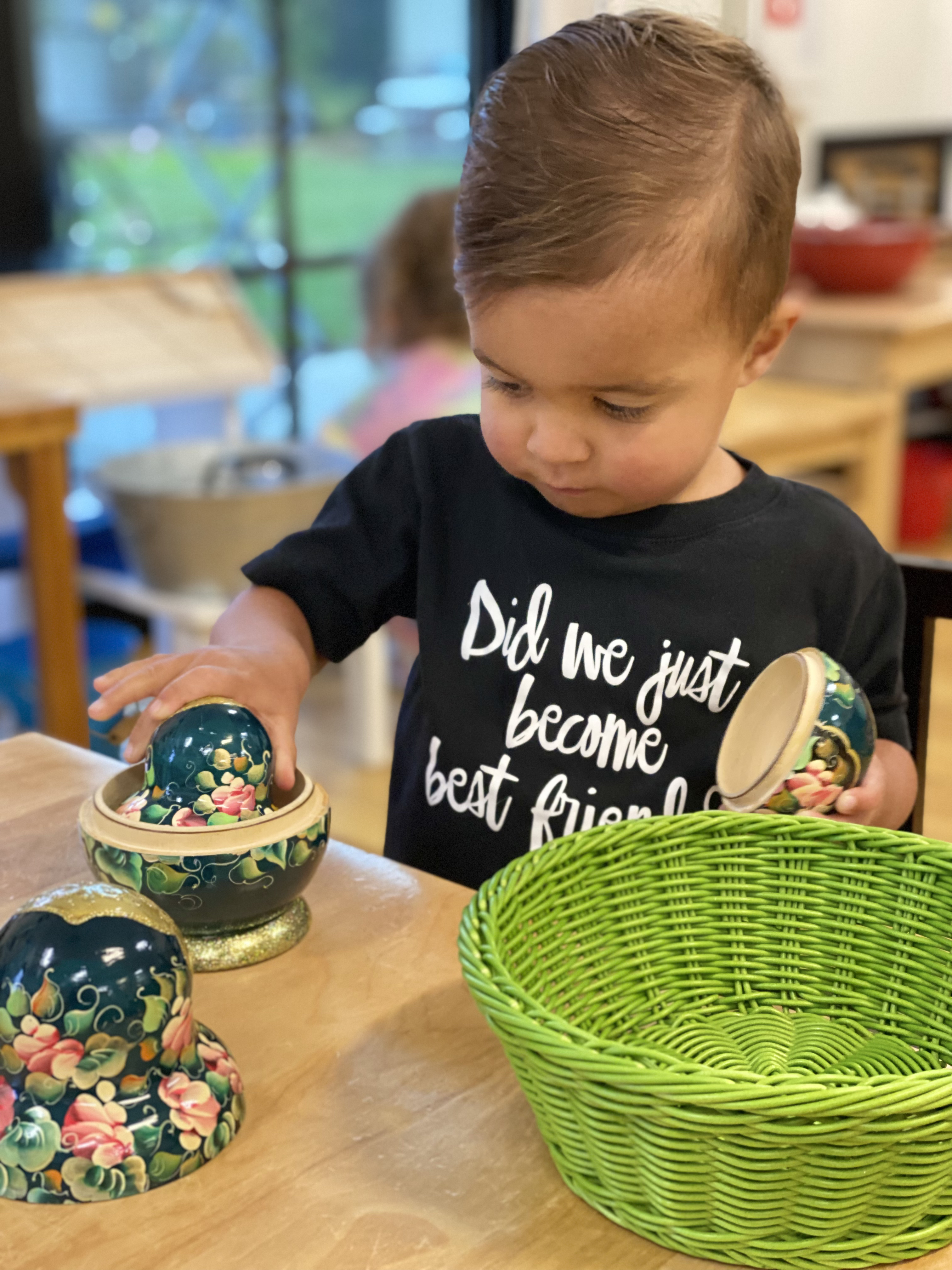(858) 759-0631
Some of you have been asking more about how to bring Montessori into your homes. So, I'll be extending a little further:
Designing and preparing a Montessori environment at home may seem like a daunting task, especially when it comes to purchasing materials. The toys in the aisles at Target or Toys R Us appear to have very little in common with the materials and work you see every day in your child's classroom. However, stocking a Montessori in the home environment is easier than you may think. The most effective works and activities are made from everyday materials, many of which you already own.
Within the Montessori classroom, natural materials are used whenever possible. We choose to provide children with wooden bowls, glass dishes, and wicker baskets because these materials are more sensory-rich than plastic. Natural materials feel interesting and different from one another. Children, especially toddlers, are exploring the world with all their senses. They are categorizing their discoveries and refining their abilities to gain information about the world around them. In an environment filled with plastic objects, a child has a harder time classifying and exploring objects. A plastic doll feels, smells, looks, sounds and tastes the same as a plastic spoon, a plastic block, and a plastic banana. If you provide your child with a fabric doll, a metal spoon, a wooden block, and a real-life banana, you are allowing him to explore with her senses the differences between these objects.
Of course, in addition to materials that are specifically for child use, it is important to stock your child's environment with real-life materials as well. Two bowls and a spoon can be hours of entertainment for a toddler learning how to transfer water. A small broom and dustpan can teach your child motor control while encouraging him or her to become an active participant in caring for the home environment. Children are naturally drawn to the "real thing" rather than plastic imitations. Many children are interested in stereotypically "adult" tasks, like washing dishes, or folding laundry. If you notice that your child is particularly interested in something you are doing, try making a similar activity that is child friendly.
For example, a child interested in doing laundry may love to work with a basket full of old rags. A basket of old socks can also be excellent laundry-related matching work.
Finally, rotate the items available to your child often. The materials in your home environment should always be available to your child on a low shelf. However, it is up to you to prepare the environment for your child. All your activities and materials do not have to be available at all times. Keeping some materials in storage will allow you to change the work available to your child often, as well as allow you to tailor the activities in your home to specific tasks or activities your child is most interested in at the moment. By rotating your materials, you will keep your child interested and avoid overloading him or her with too many activities at one time.
Creating games and activities from everyday items can be so easy, and so much cheaper than breaking the bank at a toy store. Plus, by creating individualized activities based on your child's curiosity, you are guaranteeing that he or she will be interested and engaged.
Preparing the home Montessori environment doesn't need to be intimidating. It can be fun, inexpensive, and based on your own creativity!
-Ms. Cristina, Beetle Teacher
(references DocPlayer.net)

